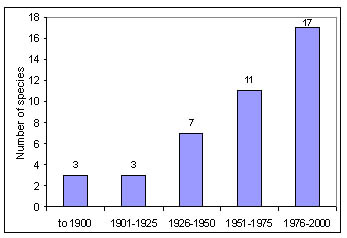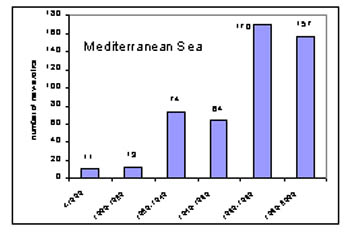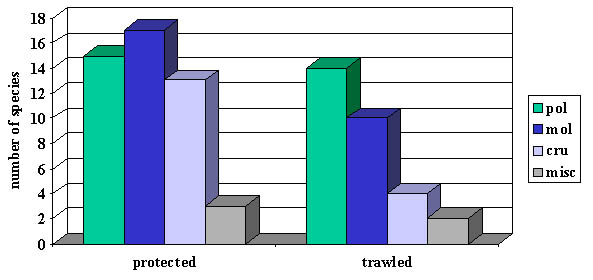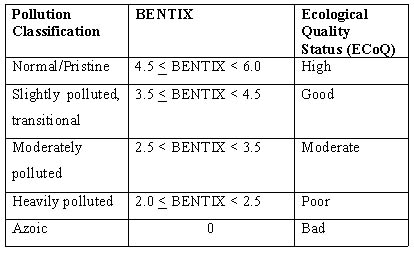

Figure 1: Trends in the introduction of exotic species into the Mediterranean and Black Sea (compiled by ETC/MCE)
(1)Institute of Oceanography, NCMR, Greece
(2) Institute of Oceanology - BAS, Bulgaria
(3)Institute of Biology, IBSS, Odessa Branch, Ukraine
Extended abstract
Introduction
The key biological characteristics of the Mediterranean and the Black Seas can
be seen in the following comparativtable (EEA, 2002).
| Mediterranean Sea | |
| Oligotrophism: it is rich in oxygen and poor in nutrients, with oligotrophy increasing from west to east | |
| High species richness: although it occupies 0.8% of the world’s ocean area, it accounts for 7.5% of all described marine species | |
| High rate of endemism Endemics: Pontian relics:& freshwater species | Endemics: Pontian relics:& freshwater species |
| Dwarfism. Compared with the Atlantic, the Mediterranean marine communities have many different species with generally smaller | Diversity decreases with depth. Deep pelagic and benthic aerobic organisms are completely absent due to the presence of H2S |
According to the estimations of Koukouras et al (2001) updated with information from NCMR’s database, out of a total of about 6000 benthic invertebrate species in the Mediterranean, about 67% (4030) are found in the western Mediterranean, 38% (2262) in the Adriatic Sea, 35% (2119) in the Central Mediterranean, 44% (2637) in the Aegean, and 28% (1658) in the Levantine Sea. This trend in number of species demonstrates a west-east zoogeocline: a large number of geographic, climatic and trophic variables are highly correlated with this pattern which has been found to be similar for many taxonomic groups.
The Black Sea hosts an even lower number of benthic invertebrates : only 808 as compared to 2637 in the Aegean. Generally, it has been established that as a result of natural factors, species diversity of Black Sea fauna is approximately three times lower compared with that of the Mediterranean. The proportion of 3:1 is valid for the soft bottom macrofauna at comparable coastal sites, representative of "clean" to "extremely polluted" ecosystems in the Black Sea and the Aegean Sea (Zenetos et. al., 2000).
Generally there is an increase of species richness with time. Since 1975, more than 350 new species of marine animals have been described for Spanish waters: 150 molluscs, 60 crustaceans, many sponges, polychaetes, bryozoa (Templado, pers. commun.) Since the beginning of the 80s, over 1000 new species are first recordings for the Eastern Mediterranean. The latter can be attributed to a) investigation of new geographic areas b) studies in new bathymetric zones c) new technology: genetic studies in taxonomy and d) biological invasionsThe main threads in benthic diversity in the Mediterranean and Black Sea are as follows:
These can be reflected either in the qualitative composition by reduction of species diversity, decline of sensitive species, establishment (dominance in cases) of introduced species or/and the quantitative structure by outburst of opportunists, shift of numerical abundance between groups.
Black Sea biodiversity is extremely sensitive to immigrants'
expansion. The wide diversity of biotopes and the low local species diversity
provide favourable conditions for some exotic invaders, which find unoccupied
ecological niches, have no competitors or enemies and develop in abundance.
The rate of introductions is constantly increasing (Fig. 1a). The Mediterranean
is undergoing a dramatic change in its species composition (Fig. 1b) due to
introduction of exotic species via the Straits of Suez, Gibraltar and Dardanelle.
Exotic species originating from the Indo-Pacific are introduced mostly via the
In 1975 the Lessepsian biogeographic province was limited in the eastern Mediterranean
(Por, 1978). with time the limits (imposed by a hypothetical line drawn from
Sicily to Tunisia) and these may serve as sensitive bio-indicators of the supposed
warming-up of the Mediterranean.


Figure 1: Trends in the introduction of exotic species into the Mediterranean
and Black Sea (compiled by ETC/MCE)
Exotic species other than of tropical Indo-Pacific origin are limited to ports and lagoons where they exhibit an invasive character. Exotics in lagoons are related to imports for aquaculture. Yet, although aquaculture production has been steadily increasing since the 1970s, the increased pressure on the environment has not led to an increase of introduced species in the marine environment. Intentionally and associated species follow decreasing patterns over the same time span, suggesting the success of EU policies in regulating and safeguarding possible adverse effects of aquaculture-related environmental hazards.
Shipping is the main vector of introductions in the Black Sea, responsible for 36% of introductions (EEA, 2002). This however has been little studied as a vector of introductions in the Mediterranean where, to date, only 20% (102 out of 489 species) are known to have been transported in this way (EEA, 2003). A great number of invaders recorded near ports have been presumably transported in ship hulls/ in ballast tanks, but the extent of the phenomenon and true mode of introductions remains unknown.
The impact of exotics on the benthic ecosystem varies from changes in physiognomy (case of Caulerpa spp.) to local displacement of native species. (case of clam Ruditapes philippinarum displacing Tapes decussata in the Adriatic or Marsupenaeus japonicus evicting the native Melicertus kerathurus along the Israel coasts). For a review of the ecological impact of bioinvasions see Galil & Zenetos (2002). In the Black Sea, the specialized predator Rapana venosa has caused a severe decline in the populations of its prey Mytilus galloprovincialis and Ostrea edulis.
EutrophicationFisheries effects on biodiversity
In the Black Sea bottom trawling for sprat during the 1970s - 80s caused resuspension
and redistribution of fine sediments and silting of large areas in the NW shelf.
The alteration of sediment type resulted in the loss of 70 % of species diversity
(Zaitsev & Mamaev, 1997). The effects of trawling have been studied mostly
on megabenthos and less on macrozoobenthos. In the Aegean Sea the effects of
experimental trawling on different types of sea bed are summarized below.
Table 1: Effects of experimental trawling on macrozoobenthos (TRIBE, 1997)
| Sandy substratum | Muddy substratum | |
| Epifauna diversity | decrease | No trend |
| Infauna diversity | decrease | No trend |
| Community diversity | Statistically significant decrease | Non significant reduction |
| Recovery rate | No signs at the community level after 6 months | Signs of recovery within 6 months |
Illegal bottom trawling for harvesting of Rapana venosa along the Bulgarian Black Sea shelf has raised ecological concerns with respect to the benthic communities and especially the mussel beds. The population decline of the habitat-structuring species Mytilus galloprovincialis in the impacted areas was accompanied by degradation of the associated benthic community from "mussel bed" type to "silt bottom" type dominated by opportunistic polychaetes and oligochaetes. Increased biodiversity abundance and biomass were evidenced in the protected area -see Figure 2 (after Konsulova et al., 2001)

Figure 2: Changes in species variety of macrozoobenthos (per taxonomic group)
in a protected vs trawled area for Rapana venosa.
The effects of fish farming on macrozoobenthos are summarized in Table 2.
Table 2. Trends in macrozoobenthos parameters in fish farms (10m from cages) -after Karakassis et.al., 2000
| Cephalonia | Ithaki | Sounion | |
| diversity | < | << | < |
| abundance | < | > | > |
| biomass | < | >10 | >10 |
| Capitella spp | dominant | dominant | present |
| P. kefersteini | abundant | present | dominant |
Other human activities affecting benthic organisms Overexploitation: cases of date mussel (Lithodomus lithophagus), corals (Corallium rubrum)Unknown reasons: massive deaths of sponges (diseases), corals in the W. Mediterranean, Adriatic and N. Aegean
Developments of tools to measure Ecological Quality Status (EcoQS) To assess the quality of ecosystem from eutrophication/oil spill/industrial effluent/tourism/other sources, two indices have been developed and tested with Mediterranean satra sets. These are the Biotic Index (Borja et al., 2000) and BENTIX index (Simboura & Zenetos, 2002). Based on the relevant abundance of ecological quality groups, both indices are designed so as to lead to a five-scale classification scheme (poor to high quality) according to the requirements of the WFD for the classification of coastal and transitional waters (Table 3). In the Black Sea, some recent good data sets on benthic communities exist and have been successfully used so far to assess long-term changes by applying “standard” techniques (Todorova & Konsulova, 2000).
Table 3: Classification system based on the bentix index for soft bottom coastal communities in the Mediterranean (after Simboura & Zenetos, 2002)

Identified gaps
in knowledge of species diversity
unexplored areas/ecosystemsLack of data on hard bottom benthos in the eastern
MediterraneanLack of recent data along the Ukrainian, Bulgarian, Romanian, Georgian
coastsLack of communication, dissemination of data in a common languageSome
areas have received little attention i.e. Romanian coasts, Georgian coasts,
Turkish coasts especially near Marmara area, Albanian coasts, S. Med countries,
certain zones of Spanish, Greek coastline unexplored groups??; faunas only for
a few groups)Benthic invertebrate inventories incomplete,
Lack of experts for some groups e.g. ??Few experts on taxonomy of certain groups
such as Oligochaeta, Nemertea, Turbellaria, Nematoda
in knowledge of exoticsReference lists for exotics in less conspicuous taxa
than mollusca, decapoda and fish
Reference lists in unexplored geographic areas (often visited ports, lagoons
with mariculture activities) through the Mediterranean and Black Seas
Scientific data (i.e. genetic diversity) interpreting mode of introduction of
exotics in unknown/dubious cases.
Studies on exotics’ impact on the ecosystem and native species
Correlation of the phenomenon (rate and dispersal of exotics) with climatic
changes at different geographic scales so as to document tropicalisation of
the Mediterranean and Black Sea through the fingerprints of biological invaders
of warm water species.
in assessing fishing impactScant information: megafauna (community level, population
level), macrofauna (2 case studies, different approaches)
Non evaluated results
in assessing ECoQSLack of long-term data due to absence of planned scientific
policy. Lack of data at areas with a single recognised pollution source Lack
of comparative data sets/methodology, analysis, reference sites
Summary and recommendations
We know a considerable amount about Mediterranean and Black Sea biodiversity
but our knowledge has a limited value because a) the data are often presented
in non-congressional languages; b) the data are not available (unpublished or
in gray literature) or not comparable (different sampling/analyses protocols
used) c) the data are insufficient (limited number of taxonomic groups studied)
and d) we are not able to translate scientific information into indicators to
support adequately political decisions /track policy effectiveness.
Detailed, descriptive studies, necessary to trace biodiversity changes (i.e. estimate species, habitat loss), are largely missing in recent years when modern research has focused on more “fashionable” issues. Modern science has given excellent results but has left important gaps in basic knowledge. Studies of the communities and the life cycles are fundamental. Further recommendations include: